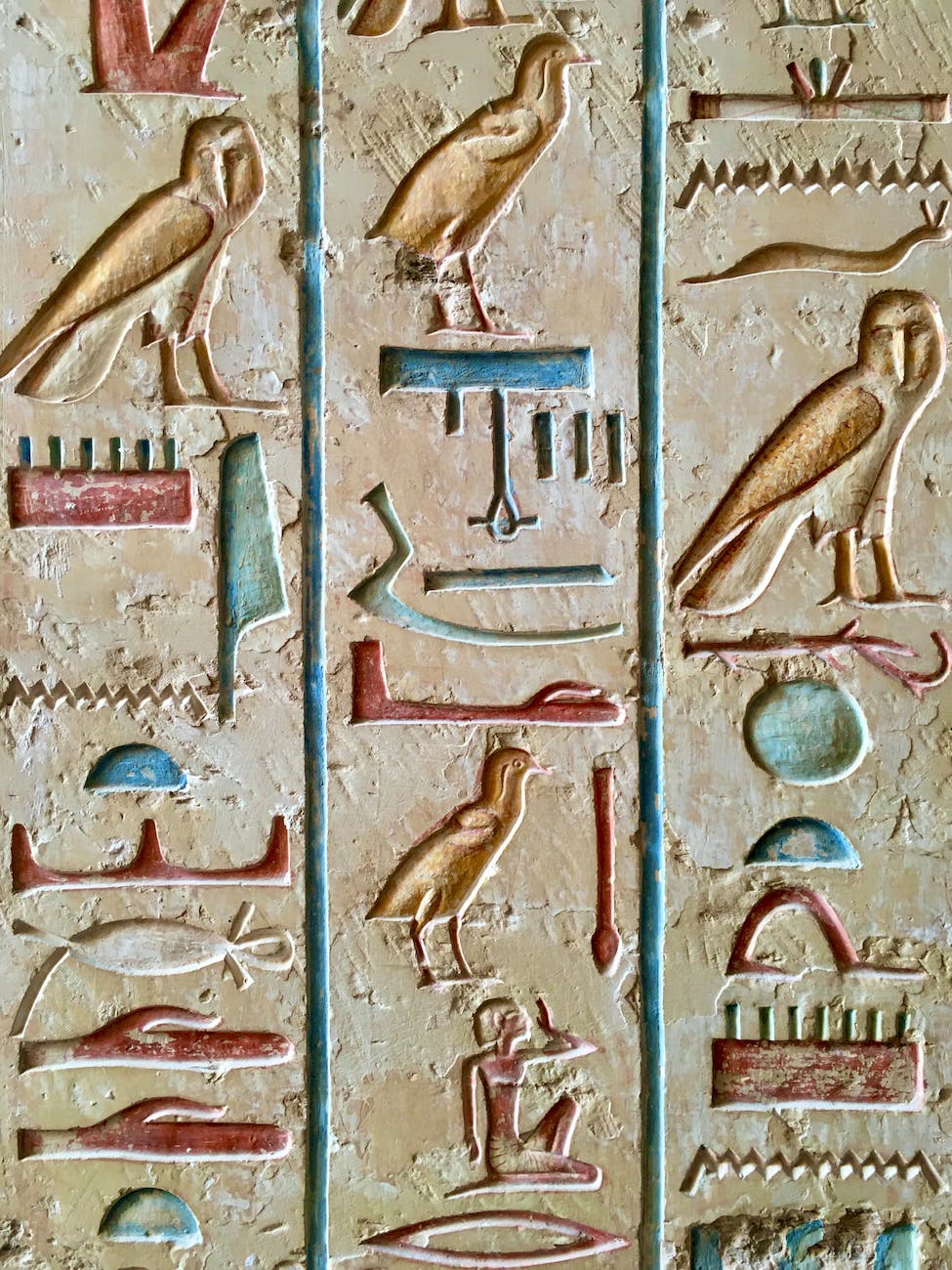
Manetho and Ptolemy’s claim to reign matters. Manetho is considered to have been an Egyptian High Priest of Heliopolis, who lived in the third century BCE. The name Manetho has been translated as the – ‘Truth of Thoth’.[1] His History of Egypt is attributed with the creation of the ‘Dynastic’ categorisation of pharaonic history, and lists them chronologically. The textual evidence remaining for Manetho’s writings, and existence, appear only referentially in the texts of other ancient authors, such as Josephus and Plutarch.[2] There has been much debate down the centuries about Manetho and whether he existed or was the author of the texts cited by later ancient historians. Putting this aside and focusing on the question at hand, his role does tally with much that is known about Ptolemy’s reign. The Sacred Book is another work attributed to Manetho; and it is this text that bears testament to the role played by Manetho in supporting Ptolemy as pharaoh.
Manetho Confirming Aspects of Ptolemy’s Dream
Plutarch records an incident involving Ptolemy having a visionary dream about a statue of Pluto. The details are that when this colossal stature was discovered at Sinope, and brought to Alexandria, Manetho of Sebennytus, and Timotheus the exegetes, confirmed it as a statue of Pluto; and that the Egyptian name for Pluto was Serapis.[1] This then has been ascribed as the beginning of the cult of Serapis, which Ptolemy used to unite his mixed Egyptian population of Macedonians, Greeks and native Egyptians. This god combined Zeus, Pluto, Apis and Osiris in death – it was a god for this life and the afterlife. Ptolemy would build temples for Serapis in every nome and sacred precinct in Upper and Lower Egypt.[2] His promotion of this new patron deity has been interpreted as being part of Manetho’s strategic guidance for the cementing of Ptolemy’s pharaohood. A new type of pharaoh was best served by a new god. Religious syncretism was vital for the success of a foreign pharaoh ruling in Egypt.[3]

Ptolemy had been careful not to offend the traditional gods and priesthoods from the very beginning of his satrapy in 323 BCE.[1] The Satrap Stele is evidence of this, with its textual content providing an insight into the concord between the priesthood of Buto and Ptolemy in 311.[2] It was important for the pharaoh to be in a harmonious relationship with the gods, if Egypt was to prosper and remain politically stable.[3] He is thought to have learnt the importance of respecting the religious beliefs of the priests and subjects from his time with Alexander, during the conquest of the Persian Empire.[4] The unpopularity of the Achaemenid pharaohs was still sorely remembered in Egypt; and Ptolemy was well advised not to make the same mistakes. Artaxerxes III is said to have slaughtered the revered Apis bull and served it for dinner.[5] Herodotus records Cambyses stabbing the Apis bull in the thigh and mocking the Egyptian priests for worshipping a god that can bleed.[6] Waddell in his introduction to Manetho suggest that The Sacred Book may have been commissioned by Ptolemy to publicise Egypt’s religious beliefs and rituals among the Greek speaking members of the Egyptian population.
If Manetho was the author of both The Sacred Book and History of Egypt, then, it would afford him great status as the recorder of both priestly and pharaonic lore. Writing things down accords that information with an authority that it may not have possessed prior to this. Ptolemy and Manetho could record the versions of events they chose to include; and then link them up with Ptolemy’s own recent lineage. Alexander was an important link in this historical chain and provided Ptolemy with his right to rule Egypt, based on the recognition of Alexander’s divinity. The traditional Egyptian pharaoh was given god status; and Ptolemy needed the priesthood to be onside in his process of becoming king.
It is interesting to postulate whether Matheno was involved in naming Ptolemy as Soter (Saviour), perhaps, as part of the strategy to endear Ptolemy to the Egyptian populace. Pausanias attributes this honorific surname to the Rhodians, who were aided by Ptolemy’s forces in resisting the siege of Demetrius in.[7] John Dillery has suggested that Ptolemy’s Egyptian pharaonic prenomen ‘Kheper-Ka-Re’ was the choice of Matheno. This Suten Bat connected Ptolemy with the pharaohs Nectanebo II and Sesostris: the former being the most recent native Egyptian pharaoh; and the latter led Egyptian forces into Europe, according to Herodotus.[8] These were very astute choices to associate a new king with, as they evoke grand memories and exploit the patriotic heart that beats so strongly within the native Egyptian population. I agree with the premise that it is the priestly caste who are the natural liaising agents between foreign powers and the local populace. They are the elite strata among the indigenous population and have the most to gain from a mutually beneficial relationship with the ultimate autocratic power.[9] Ptolemy would have learnt this from his time with Alexander in Asia.

Ptolemy’s own History of Alexander, showed him to be a skilful manipulator of information – as he repeatedly cast himself in a favourable light.[10] Modern scholarship now thinks that Ptolemy’s book was written and published prior to his elevation as King of Egypt in 305; and was written as a tool to establish his bonafides as Alexander’s successor. It follows that such a savvy political operator would employ the services of someone like Manetho to further his ambitions in Egypt. Ptolemy had hijacked Alexander’s embalmed corpse and interred it into a sarcophagus in Memphis in 321; this shows that he would employ whatever was necessary to succeed. The body would forty years later make its way to Alexandria.[11]
©Robert Hamilton
ANCIENT SOURCES
http://penelope.uchicago.edu/Thayer/L/Roman/Texts/Aelian/de_Natura_Animalium/10*.html viewed 25 November 2016.
Arrian, The Campaigns of Alexander, Rev Ed, (London, 1971).
Austin, M, The Hellenistic World from Alexander to the Roman Conquest, 2nd ed, (Cambridge, 2006).
http://penelope.uchicago.edu/Thayer/E/Roman/Texts/Diodorus_Siculus/1D*.html viewed 25 November 2016.
Herodotus, The Histories, Rev Ed, (London, 1972).
Manetho, (trans. WG, Waddell), (Cambridge, 1940).
http://penelope.uchicago.edu/josephus/apion-1.html#S14 viewed 24 November 2016.
http://penelope.uchicago.edu/Thayer/E/Roman/Texts/Plutarch/Moralia/Isis_and_Osiris*/B.html#28 viewed 20 November 2016.
http://www.perseus.tufts.edu/hopper/text?doc=Perseus%3Atext%3A1999.01.0160%3Abook%3D1%3Achapter%3D8%3Asection%3D6 viewed 21 November 2016.
MODERN SOURCES
Bevan, E R, The House of Ptolemy 331-30 BC, (London, 1927).
Dillery, J, “Manetho and Udjahorresne: Designing Royal Names for Non-Egyptian Pharaohs”, Zeitschrift fur Papyrologie und Epigraphik, Bd. 144, (2003), 201-202.
Manning, G, “Land tenure, rural space, and the political economy of Ptolemaic Egypt (332 BC – 30 BC), Princeton/Stanford Working papers in Classics, (May 2005) https://www.princeton.edu/~pswpc/pdfs/manning/050501.pdf viewed 24 November 2016.
Shipley, G, The Greek World: After Alexander 323-30 BC, (Oxon, 2000).
Stiehl, R, “The Origin of the Cult of Serapis”, History of Religions, Vol 3 (1), (1963), 21-33.
Worthington, I, Ptolemy I: King and Pharaoh of Egypt, (New York, 2016).
[1] Manning, G, “Land tenure, rural space, and the political economy of Ptolemaic Egypt (332 BC – 30 BC), Princeton/Stanford Working Papers in Classics, (May 2005) https://www.princeton.edu/~pswpc/pdfs/manning/050501.pdf viewed 24 November 2016.
[2] “Decree of the satrap Ptolemy Lagides”, http://www.reshafim.org.il/ad/egypt/texts/lagides.htm
[3] Shipley, G, The Greek World: After Alexander 323-30 BC, (Oxon, 2000). 196.
[4] Arrian. Campaigns of Alexander 3. 15
[5] Aelian, On Animals 10. 28
[6] Herodotus, Histories 3. 29
[7] Pausanias, Description of Greece 1. 8.6
[8] Dillery, J, “Manetho and Udjahorresne: Designing Royal Names for Non-Egyptian Pharaohs”, Zeitschrift fur Papyrologie und Epigraphik, Bd. 144, (2003), 201.
[9] Shipley, G, The Greek World: After Alexander 323-30 BC, (Oxon, 2000). 195.
[10] Worthington, I, Ptolemy I: King and Pharaoh of Egypt, (New York, 2016). EBook, Loc. 1121.
[11] Bevan, E R, The House of Ptolemy 331-30 BC, (London, 1927). EBook, Loc. 320.
[1] Plutarch, Moralia Ch 28.
[2] Diodorus, Library of History, 1. 73.
[3] Worthington, I, Ptolemy I: King and Pharaoh of Egypt, (New York, 2016). EBook, Loc. 4809.
[1] Plutarch, Moralia Ch 28.
[2] Diodorus, Library of History, 1. 73.
[3] Worthington, I, Ptolemy I: King and Pharaoh of Egypt, (New York, 2016). EBook, Loc. 4809.
[1] Manetho, (trans. WG, Waddell), (Cambridge, 1940). Introduction IX.
[2] Josephus, Contra Apionem 1. 14.74
[ebook_store ebook_id=”62657″]











